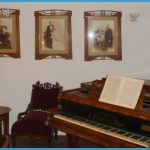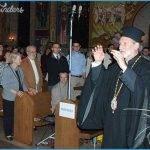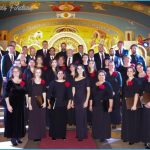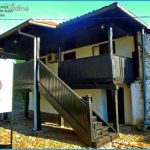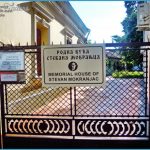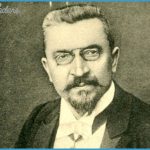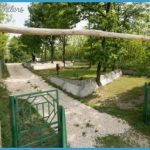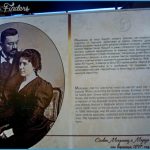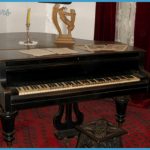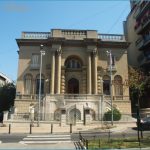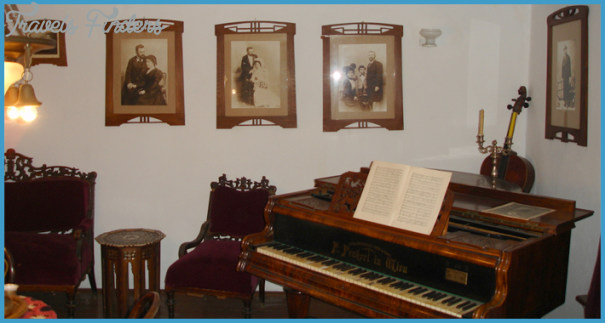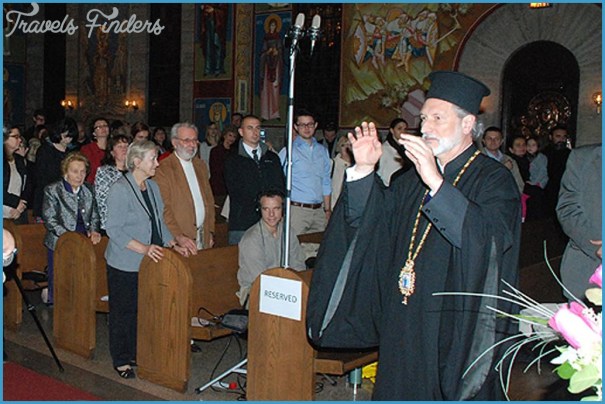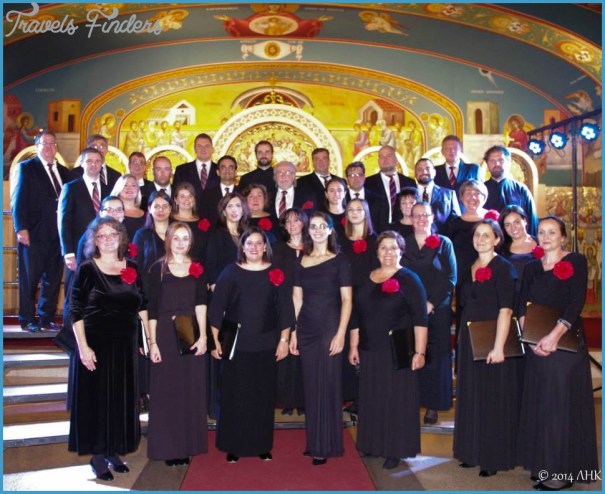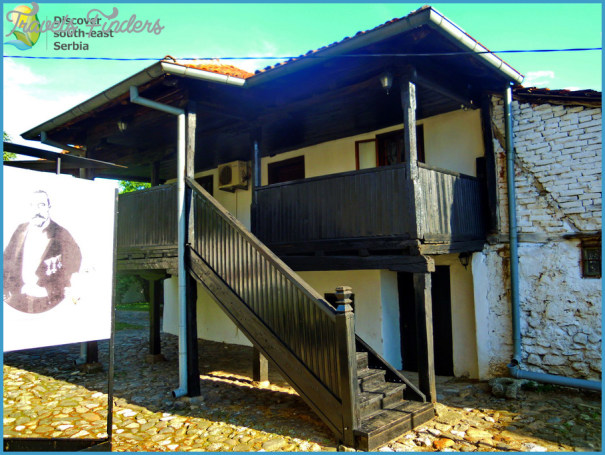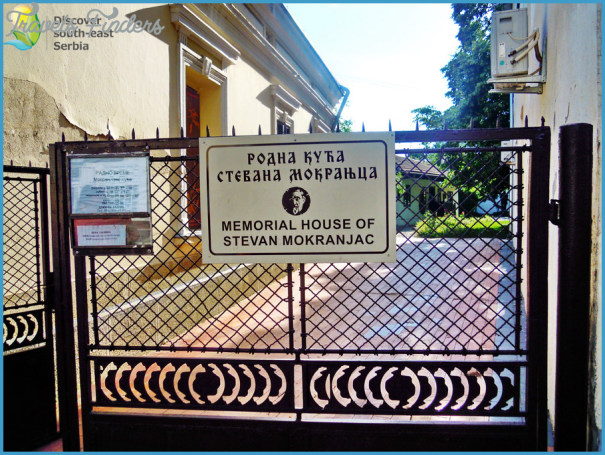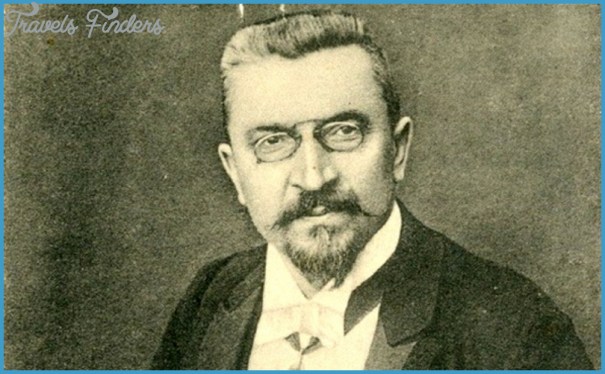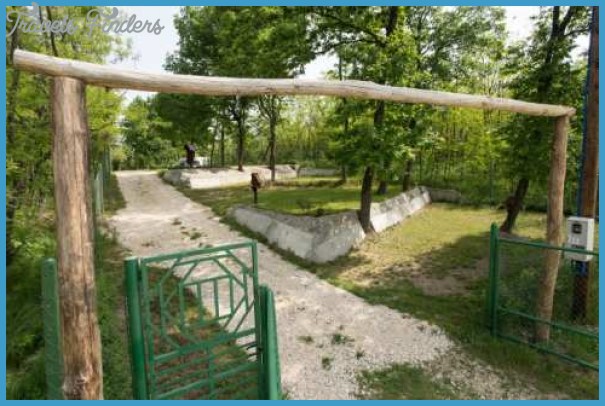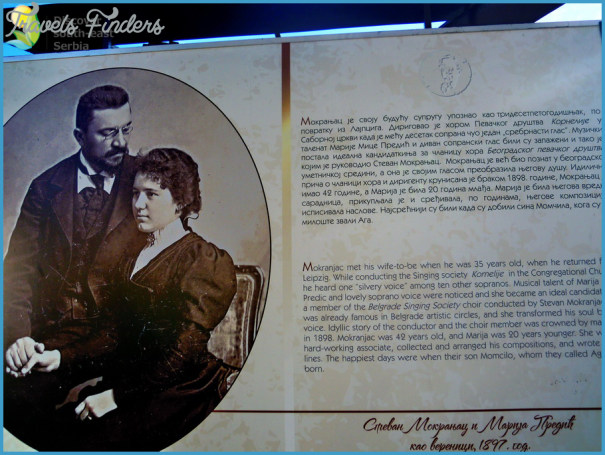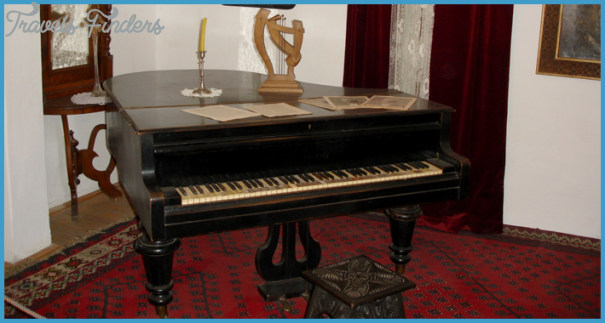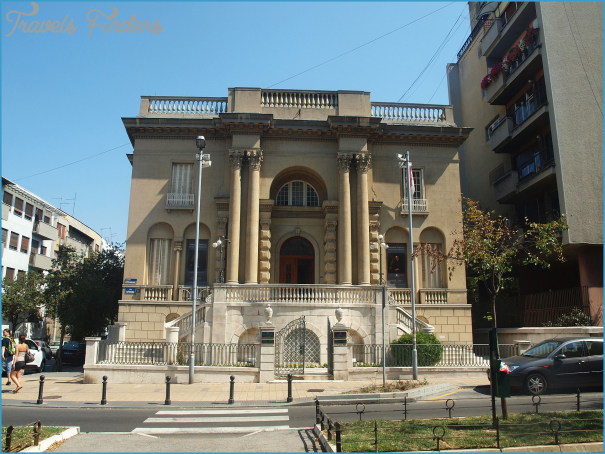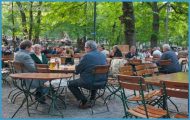MOKRANJAC MUSEUM
More than any other composer, Stevan Mokranjac is reckoned the father-figure of Serbian music, and revered and remembered warmly. Born in 1856, he underwent a fairly conventional training for a musician born on the edges of the Austro-Hungarian empire, studying first in the local capital, Belgrade, and later in Munich, Rome and Leipzig. From 1887 he lived in Belgrade, where he was conductor of the city’s choral society, founder of the Serbian School of Music (now called the Mokranjac School) and the Serbian String Quartet (in which he played the cello). He was also an assiduous collector and analyst of folk music, from Serbia and all the neighbouring Slav regions, and he wove Serbian folksong into his own compositions, of which the central body is a series of 15 Rukoveti (‘Garlands’), groups of choral pieces that make imaginative use of folk melodies and rhythms. No less admired are his contributions to the repertory of the Serbian Orthodox Church. He died in Skopje in 1914.
MOKRANJAC MUSEUM Photo Gallery
Mokranjac was born in Negotin, a modest-sized town – then of about 300, now about 20,000 – in the remote extreme east of Serbia, close to the point where Romania, Bulgaria and Serbia meet. It is about 250 km by road from Belgrade, though the route through mountainous country is circuitous. Negotin lies about six kilometres from the Danube, in a valley, and until flood barriers were in place it was an insalubrious area and often found itself an island. The region was freed from Ottoman rule only in 1833 and there are many relics of earlier times, among them some remarkable carved gravestones in the churchyard close to the Mokranjac house, at a church where at one time he directed the music. Mokranjac’s father died two days before he was born. The prosperous owner of a restaurant, in 1850 he had built a substantial house; the family remained in it, though in increasingly straitened circumstances, until 1883. Thereafter the roads nearby were redesigned and other property was built around it, in effect blocking off the original frontage. In 1964 the inside of the house was restored and adapted to its use as a museum to the composer and of 19th-century life, and as a musical centre. As remodelled, the house represents not so much a re-creation of Mokranjac’s childhood home but an authentic example of Serbian rural architecture, with an interior in the Moravska’ manner (Moravian influence is marked in this part of the country). The entrance, inevitably, is from what was originally the rear, up an outdoor staircase – in the yard there is a striking statue of Mokranjac, erected in 1981 to mark the 125th anniversary of his birth – and one enters first the kitchen, with its corner fireplace and stove. The dining-room is Mokranjac’s birthplace and statue, Negotin furnished and fitted out as it might have been by his father, with carved chairs, a samovar, silver and glass, clocks and a mirror, and, in the Serbian tradition, with an icon by a well-known painter of the saint (St Nico) adopted by the family. In the drawing-room – originally the main bedroom – are Mokranjac’s own grand piano and his cello, and items of furniture and furnishings relating to his life: a ten-sided inlaid table given to him in Turkey, a black carved piano stool made by his wife Marija (she had been a member of his Belgrade choir, 20 years his junior), a floral encrusted vase that had been presented to him, a folk-style crocheted table cover.
The central hall has photos and portraits, including some of his string quartet. There are also photos of his family at various stages. Some of the original walls were removed to create a large concert and display room. In it is a table given to him by the Turkish Sultan, his desk with his inkwell and ashtray, a model lighthouse, encrusted in laurel, presented to him by the Belgrade choral society, with a brick representing each of his works, and the Bosendorfer piano bought for the music school that Mokranjac founded. There are also original portraits of him and his wife. On the walls are informative display boards, in Serbian. On the walls of a further small room are pictures of his favourite composers, along with a cupboard from his Belgrade flat with his personal, nonmusical library. All the contents of the museum, apart from items that were Mokranjac’s own, were donated by the people of the Negotin area. His memory is celebrated at Negotin each September, in the Mokranjac Days’, founded in 1965 and organized from the house next to the museum.

